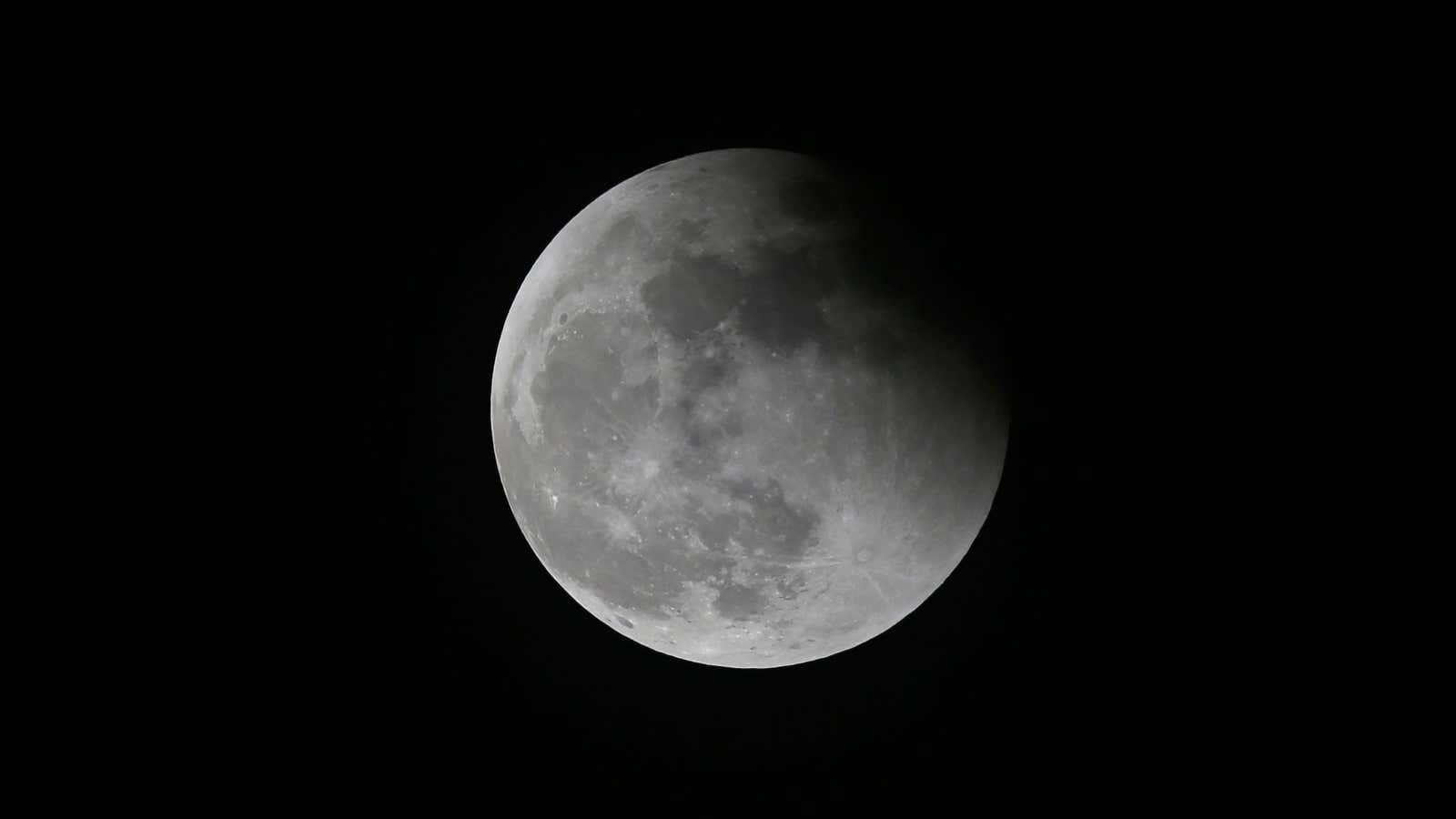Space travel is hard. It’s been seven and a half years since Google and the X Prize Foundation announced a $20 million grand prize to the first team that successfully lands and maneuvers a robot on the moon. But slow progress pushed the Google Lunar XPRIZE deadline (originally slated for 2012) several times—most recently to the end of 2016.
Two competing teams have decided they’d have a better shot achieving this elusive goal by working together. Japanese team Hakuto plans to piggyback two rovers on Pittsburgh, Pennsylvania-based Astrobotic’s launch mission, scheduled to take off in the second half of 2016 aboard a SpaceX Falcon 9 rocket.
The two teams are referring to their partnership as a “rideshare contract”—really taking the term ridesharing to another level.
The collaboration will be beneficial to both parties. For Hakuto, which is solely focused on rover development, it’s a way to get its twin rovers, Moonraker and Tetris, to the moon. Astrobotic, meanwhile, has landed an early customer for its lunar delivery service.
For these two teams, the space race will boil down to the on-ground performance of Moonraker, Tetris, and Astrobotic’s Andy rover. To successfully complete the mission, the rovers will have to travel 500 meters on the moon, and then beam high-definition video and images back to Earth. “We envision a ‘NASCAR on the Moon’ scenario, where competing teams land together, and countries can cheer on their team to the finish line,” said Astrobotic Technology CEO John Thornton in a statement. As for the $20 million on the line, collaboration means sharing the winnings. The teams didn’t say how the prize would be divvied up if they are successful.




